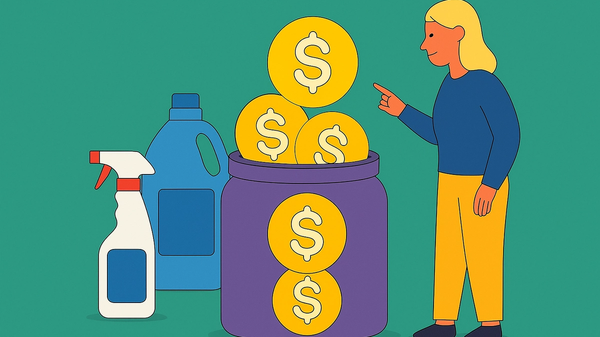Highlights:
- What happens to your investments after you pass? How to make sure your money gets to the right people
- Protect your family from court delays, legal fees, and government decisions
- See how to reduce taxes on your investments when they’re passed on
You’ve worked hard to save, invest, and build financial stability. But what happens to it all if something unexpected happens?
I asked Nicole Garton, a top Canadian wills and estates lawyer and co-founder of Heritage Trust, to share what investors need to know about planning their estate.
Because without an estate plan, your money might not reach the people you want to leave it to.
Let’s dive in…
Nicole Garton, recognized by Best Lawyers in Canada™ for trusts and estates
Every Canadian needs an estate plan
It’s not just for retirees or the ultra-wealthy.
If you’ve got a TFSA or RRSP, you already have an estate - and having an estate plan means you get to decide who gets what.
It means your money will go exactly where you intended; no stress, delays, or drama.
Without a plan, your loved ones could be left with a legal mess.
Even a simple plan makes a big difference. You’ve done the hard work of building wealth. Let’s make sure it lands where it should!
Think of your estate plan as an extension of your financial plan
It protects your investments, your assets, and most importantly, your loved ones.
Without one, the province could decide who gets what - and it might not align with what you’d want.
Your estate plan is essentially the final step in your financial strategy. It’s how you:
- Make sure your investments go to the right people
- Protect your family from stress, delays, and unexpected legal costs
- Give clear guidance about how your money and assets should be handled
- Prevent things from falling through the cracks
You’ve already done the hard part by building wealth. Now it’s time to make sure it’s protected.
Start by making a list of what you own
Especially with so many things being online now, it’s getting harder to track things down - like banking, brokerages, and crypto cold wallets.
If you don’t have a list of where your money is, it’s easy for things to get missed.
Create a simple inventory of your assets and accounts. This includes:
- RRSPs, TFSAs, and any non-registered accounts
- Pensions or group RRSPs through work
- Real estate or other property
- Business ownership, if applicable
- Life insurance policies
- Bank accounts and cash holdings
- Crypto or digital assets
- Any outstanding debts (mortgage, credit cards, loans)
Assign beneficiaries
One of the biggest estate planning mistakes I see? Not having a beneficiary.
A beneficiary is the person (or people) you choose to receive your money, property, or other assets after you pass.
Accounts like RRSPs, TFSAs, and life insurance policies let you name a beneficiary directly. This means the funds ‘bypass’ your will and go directly to the person named.
The one exception is for people living in Quebec - you can’t name beneficiaries for accounts, and instead always need to have them listed in your will.
Make sure your beneficiary designations are:
- Up to date (especially after marriage, divorce, or family changes)
- Aligned with your will (to avoid confusion or conflict)
- Clearly documented (so they’re easy to locate if something happens)
Think about taxes
RRSPs are taxable upon death if not transferred to a spouse. That could create a surprise tax bill for your estate.
TFSAs, on the other hand, are tax-free, but only if the beneficiary is designated correctly.
Some things to consider:
- Name your spouse as “successor holder” on your TFSA
- Review your RRSP strategy with your estate in mind — not just your retirement
- For non-registered accounts, keep track of adjusted cost base (ACB) to minimize taxes for your heirs
Keep things handy
Your executor (the person in charge of settling your estate) needs to know what accounts exist, where they are, and how to access them. This is where many well-intentioned plans fall apart.
Keep a secure, up-to-date list of:
- Account numbers and institutions
- Contact information for advisors or institutions
- Login info (stored securely, of course)
- A copy of your will and Power of Attorney
Wondering what to do next?
This is a great start, but as an investor you’ll definitely want a full estate plan.
Putting it together can seem overwhelming, but it doesn’t have to be.
If you want more help, I’m giving a free webinar on June 9, 2025 where I’m sharing the 5 simple steps to creating an estate plan.
It will give you a clear roadmap of what to do next to protect your finances and your loved ones.
You’re welcome to join me! Click here to register.
Simplify your investments, now and in the future
Creating your estate plan is one piece of the puzzle.
But having your investments organized and on track is just as important!
Passiv makes it easy to manage your investment portfolio, automate your strategy, and see all your investments at a glance.
Whether you are building wealth for yourself or planning to pass it on one day, Passiv gives you the tools to be in control and achieve your goals faster.
You can have your Forever Free plan set up in just minutes!
Start using Passiv for free!


